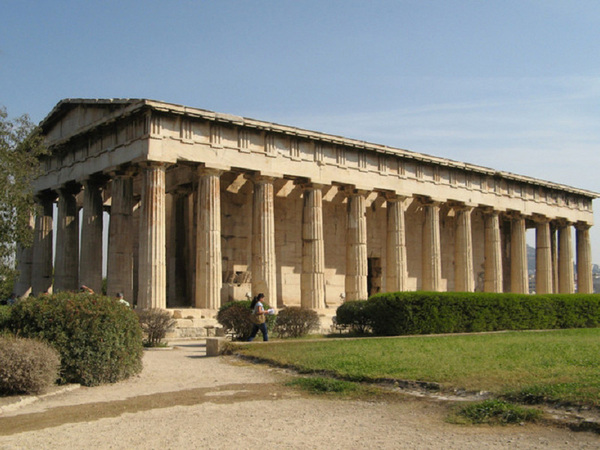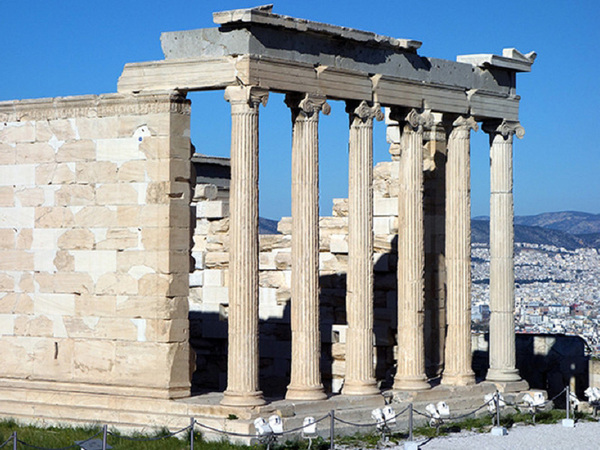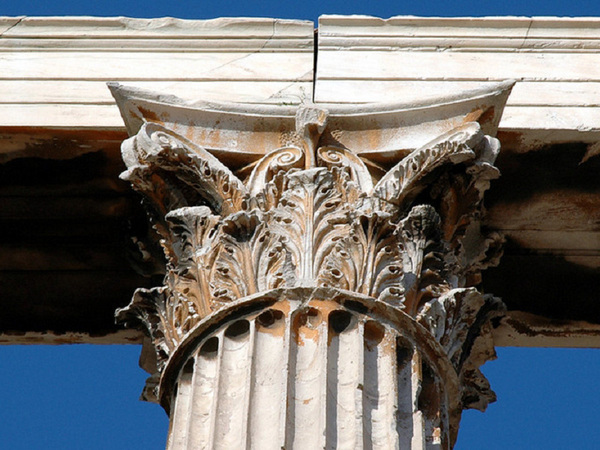Temple Architecture
Temples held a paramount position in ancient Greek society, reflecting the profound significance of religion in daily life. Situated prominently, these structures served not only as places of worship but also as symbols of political authority and divine influence. Originating in the 8th century BC, early temples were constructed using wood and sun-dried bricks, with many of their characteristics later replicated in marble edifices during the 6th century.
The progression of Greek temple architecture unfolds through three distinct styles, each marked by its unique column capitals.

Doric temples were characterized by robust columns featuring plain capitals and lacking bases, reminiscent of their wooden precursors.
The emergence of Ionic temples introduced variations, notably seen in the increased number of columns and the distinctive capital design adorned with volutes resembling ram's horns.

Corinthian temples, predominantly found in Athens and built during the Roman era, showcased slender column shafts crowned with intricately adorned capitals featuring acanthus leaves.













